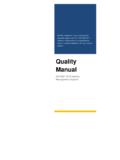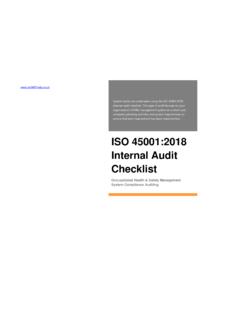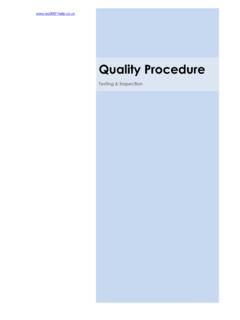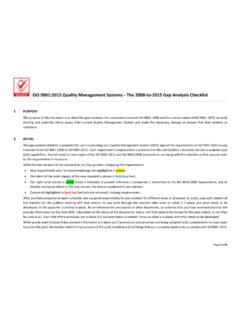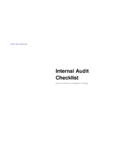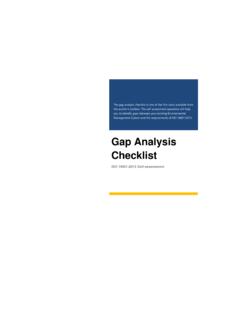Transcription of ISO 9001:2015 Internal Audit Checklist
1 The Internal Audit Checklist is just one of the many tools available from the auditor s toolbox. The Checklist ensures each Audit concisely compares the requirements of iso 9001 : 2015 , and your EQMS against actual business practice. iso 9001 : 2015 Internal Audit Checklist System & Process Compliance Auditing Double click here to insert your organization s name or logo. iso 9001 : 2015 Internal Audit Checklist System & Process Compliance Auditing Document Ref: Page 1 of 67 Table of Contents GUIDANCE .. 3 ABOUT THIS Checklist .. 3 Audit SCORING CRITERIA.
2 3 PRINCIPLES OF AUDITING .. 4 Audit METHODOLOGY .. 5 Introduction .. 5 Preparation .. 6 Documented Information Review .. 6 Process Criteria, Metrics and Objectives .. 7 Previous Audit Findings .. 7 Customer Complaints and Corrective Actions .. 7 Inputs and Outputs .. 7 Relevant ISO standards .. 7 Review Performance .. 7 Review Competencies .. 8 Review Linkages & 8 Review the Process .. 8 Review the Findings .. 9 Prepare the Report .. 9 Internal Audit CHECKLISTS .. 10 PART 1: CONTEXT OF THE ORGANIZATION .. 10 Audit Findings Summary .. 14 PART 2: LEADERSHIP.
3 15 Audit Findings Summary .. 20 PART 3: PLANNING .. 21 Double click here to insert your organization s name or logo. iso 9001 : 2015 Internal Audit Checklist System & Process Compliance Auditing Document Ref: Page 2 of 67 Audit Findings Summary .. 25 PART 4: SUPPORT .. 26 Audit Findings Summary .. 33 PART 5: 34 Audit Findings Summary .. 54 PART 6: PERFORMANCE EVALUATION .. 57 Audit Findings Summary .. 63 PART 7: IMPROVEMENT .. 64 Audit Findings Summary .. 67 Double click here to insert your organization s name or logo. iso 9001 : 2015 Internal Audit Checklist System & Process Compliance Auditing Document Ref: Page 3 of 67 Guidance About this Checklist The Audit Checklist is just one of the many tools which are available from the auditor s toolbox that help ensure your audits address the necessary requirements.
4 It stands as a reference point before, during and after the Audit process and if developed for a specific Audit and used correctly will provide the following benefits: Ensures the Audit is conducted systematically; Promotes Audit planning; Ensures a consistent Audit approach; Actively supports your organization s Audit process ( iso 9001 : 2015 , Clause ); Provides a repository for notes collected during the Audit ; Ensures uniformity in the performance of different auditors; Provides reference to objective evidence. This Audit Checklist comprises tables of the certifiable ( shall ) requirements, from Section to Section of iso 9001 : 2015 , each required is phrased as a question.
5 This Audit Checklist may be used for element compliance audits and for process audits. If you wish to create separate process Audit checklists, select the clauses from the tables below that are relevant to the process and copy and paste the Audit questions into a new Audit Checklist . We suggest that you retain this Audit Checklist as your master copy . Audit Scoring Criteria A risk-based Internal Audit approach allows the Internal Audit to concentrate on reviewing the major risks to your organization. The Audit s role is to provide assurance that key risks to your organization s objectives are being well controlled.
6 The Audit findings traffic lights are intended to visually communicate the risk posed by the Audit finding of any system or processes being audited. The rating system is stratified from compliant to major non-conformance to convey a concise and consistent method for scoring each Audit finding. At the end of the Audit , you can transfer the findings into an Excel spreadsheet to create charts, summary tables and trend data to paste into your Audit report or management review documentation. Double click here to insert your organization s name or logo.
7 iso 9001 : 2015 Internal Audit Checklist System & Process Compliance Auditing Document Ref: Page 4 of 67 This methodology should be uniformly applied to all types of Internal Audit (gap analysis , system audits and process audits) that your organization will likely undertake. Finding Definition/Impact Action/Mitigation COMPLIANT Compliant means adherence with the requirements of the standard and the EQMS. The process is implemented and documented and records exist to verify this. Continue to monitor trends/indicators. OFI A low risk issue that offers an opportunity to improve current practice.
8 Processes may cumbersome or overly complex but meet their targets and objectives. Unresolved OFIs may degrade over time to become non-compliant. Review and implement actions to improve the process(s). Monitor trends/indicators to determine if improvement was achieved. MINOR N/C A medium risk, minor non-conformance resulting in deviation from process practice not likely to result in the failure of the management system or process that will not result in the delivery of non-conforming products nor reduce the effectiveness of the EQMS. Investigate root cause(s) and implement corrective action by next reporting period or next scheduled Audit .
9 MAJOR N/C A high risk, major non-conformance which directly impacts upon customer requirements, likely to result in the customer receiving non-conforming products or services, or which may reduce the effectiveness of the EQMS. Implement immediate containment action, investigate root cause(s) and apply corrective action. Re- Audit in 4 weeks to verify correction. Principles of Auditing Auditing relies on a number of principles whose intent is to make the Audit become an effective and reliable tool that supports your company s management policies and procedures whilst providing suitable objective information that your company can act upon to continually improve its performance.
10 Adherence to the following principles are considered to be a prerequisite for ensuring that the conclusions derived from the Audit are accurate, objective and sufficient. It also allows auditors working independently from one another to reach similar conclusions when auditing in similar circumstances. The following principles relate to auditors. 1. Ethical conduct: Trust, integrity, confidentiality and discretion are essential to auditing; 2. Fair presentation: Audit findings, conclusions and reports reflect truthfully and accurately the Audit activities ; 3.


